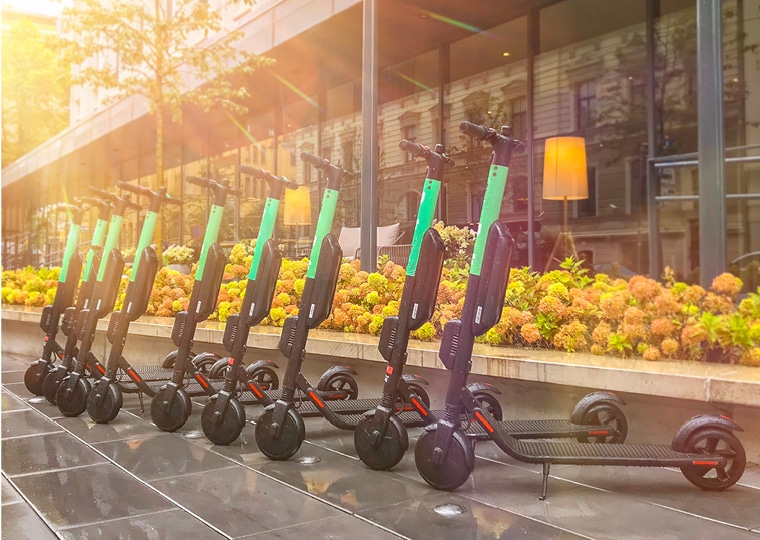
I recently had the privilege to witness firsthand what it takes to excel in a smart city “coopetition” akin to a self-styled friendly version of Shark Tank.
This past summer, I was able to collaborate with several STV colleagues, as well as a member of our Advisory Council, in support of the Texas Innovation Alliance’s (TIA) “Innovation Invitational” conference in Austin. The TIA is an organization affiliated with the University of Texas that operates with support from contracts with the Texas Department of Transportation (TxDOT), and grants from the City of Austin and other member cities across Texas. Its primary aim is to encourage various communities, including cities, counties, transit agencies, and similar municipal jurisdictions in Texas, to establish “Innovation Zones.” These zones are platforms for advancing new smart city technologies that foster partnerships between the public and private sectors and drive technology innovation and deployment within their respective jurisdictions.
The Innovation Invitational welcomes communities to pitch their project ideas to a panel of experts and then receive constructive feedback. It also serves a crucial need as it relates to ideation in one of the fastest-growing states in the country. Texas is currently home to six of the country’s 25 largest cities based on 2022 population data. When vying for federal grant funding, few other states contend with the same level of competition among their own large cities the way Texas does, making it essential that the state presents some of the most exceptional proposals possible.
The TIA addresses this challenge by ensuring communities to submit proposals that maximize Texas’s chances of securing discretionary federal funding. Additionally, the TIA assists communities in forging robust partnerships around the deployment of new smart city technologies, thereby enhancing the quality of their proposals.
The TIA fosters an environment of “coopetition” among its member cities and community Innovation Zones. This means that even as these communities compete for state and federal funding, they also collaborate to ensure that all benefit from innovation. Technological advances and deployment successes achieved in one Texas community are shared across the state through the network of member Alliance agencies. A success story in El Paso becomes a future success story in Austin, North Texas, Houston, San Antonio, and/or the Rio Grande Valley.
Success is not about showcasing or implementing the latest technology for technology’s sake or striving to be the next major industry deployment destination. It hinges on identifying an underlying urban issue that demands resolution, where an emerging technology, policy, or novel use of existing technology can be applied innovatively to address the challenge. A robust smart city approach necessitates a profound understanding and clear definition of the underlying issue, a commitment to data analysis and documentation (including deploying sensors if necessary to generate original data), an innovative solution or creative use of existing technology/process, and ongoing monitoring to ensure that the solution aligns with the intended goal.
Additionally, it must be emphasized that a smart city approach doesn’t mandate a focus on high-tech solutions; it does, however, require innovative thinking and rigorous, data-driven analysis, even if deploying a proven technology or policy in an innovative manner. Before embarking on a project, it’s essential to identify desired outcomes and measures of effectiveness so that everyone involved agrees on the intended results. Whether the goal is to reduce traffic fatalities, enhance mobility and reliability for individuals with disabilities, optimize transit operations and freight movement, or improve access to public services, communities must clearly define their purpose and goals.
To successfully transform a community into a smart city, communities need to define the purpose and outcomes they seek to achieve and be prepared to celebrate unexpected accomplishments along the way. Organizations like the Texas Innovation Alliance are invaluable and deserve industry support because they help communities pinpoint use cases and community needs that private industry can address. These organizations help create a network of communities within their respective states, fostering the exchange of ideas and successes. Breakthroughs in addressing community needs in one area can benefit other areas within the same state. In the case of Texas, the Alliance can enhance the quality of grant proposals submitted on behalf of the state government, ensuring that they stand the best chance of securing federal investment.
I look forward to sharing more about similar organizations in the coming year and discussing STV’s ongoing commitment to and involvement in these industry-supportive endeavors.

Robert Spillar, P.E., is a STV senior vice president and the firm’s national director of smart cities. He recently participated in the TIA Innovation Invitational alongside Dan Corey, vice president and national director of mobility; KiSeok John, vice president, digital advisory; Patricia Macchi, senior principal and senior special project manager; and Kirk Steudle, STV Advisory Council and former Michigan Department of Transportation Director.






